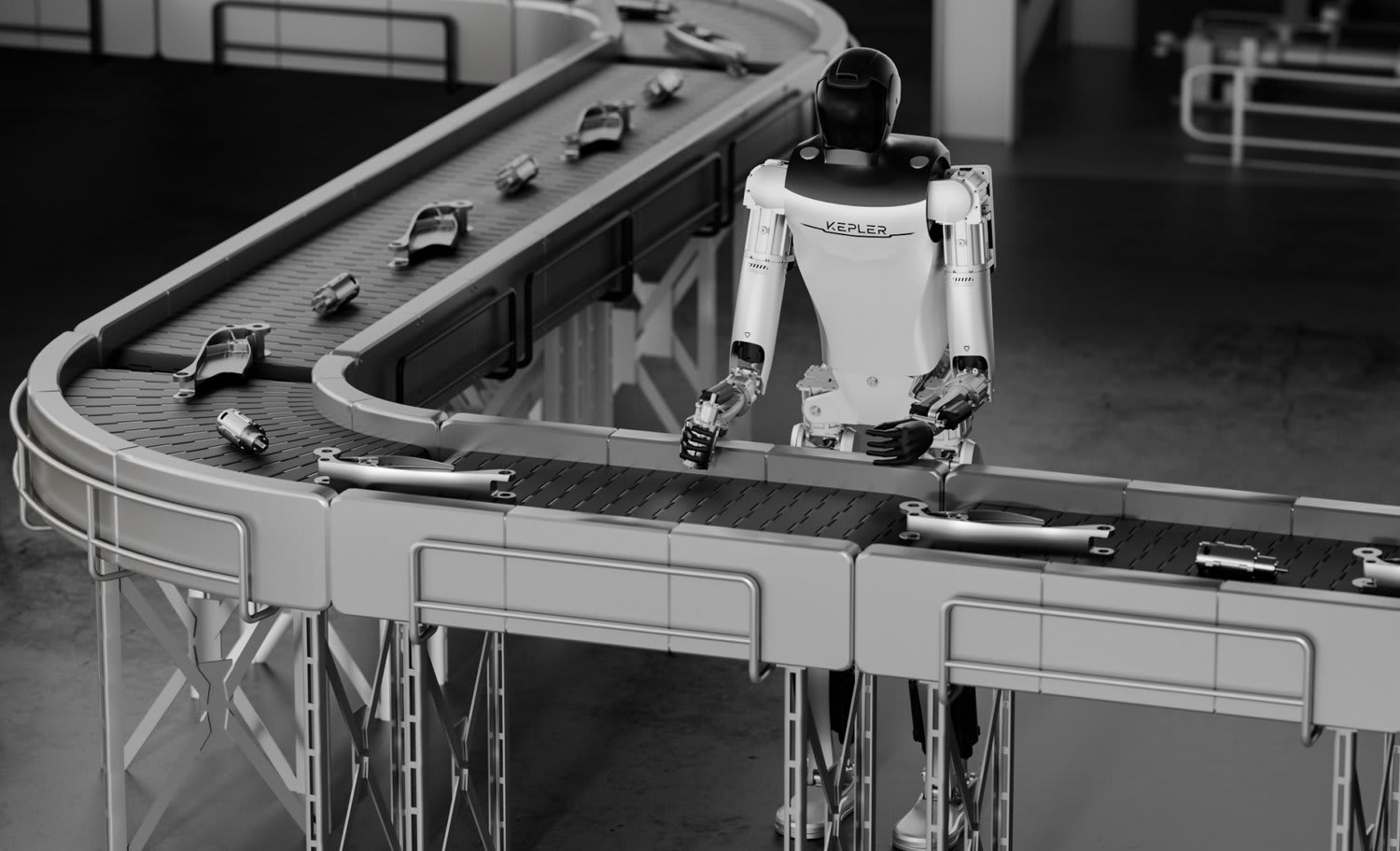K2 Bumblebee
The K2 Bumblebee is a highly advanced humanoid robot designed for commercial and industrial applications. It features a hybrid actuator system combining planetary roller screw linear actuators and rotary actuators, enabling a human-like straight-knee gait with high precision and energy efficiency. With 52 degrees of freedom, including 11 per hand, it offers exceptional dexterity and tactile sensing for detailed manipulation tasks. The robot can lift up to 30 kg total and is equipped with sophisticated sensory systems such as 3D cameras, fisheye vision, inertial measurement units, and force-torque sensors. Its AI-powered control system supports natural language commands, dynamic gait switching, and real-time environment adaptation, making it suitable for manufacturing, logistics, emergency response, and research. The K2 runs on a cloud-integrated platform with over-the-air updates and multi-robot coordination capabilities.
Robot Specifications
- Key FeaturesKey Features
- Top Features
- Other Features
Weight
75 kg
Runtime
8 hours
Charging Time
2 hours
Battery Pack
2.5 kWh
Battery Life
4 years
Carrying Capacity
15 kg per arm
Speed
3 km/h (0.83 m/s)
Compatible Devices
Alexa, Google Home
Available Colours
Yellow, black, gray
Dimensions
175 cm x 60 cm x 50 cm
Available Countries
China, USA, EU countries, Japan, South Korea
Cloud Integration
Yes, supports cloud AI services and data analytics
Warranty Info
2 years limited warranty covering hardware and software
User Interface
Touch screen, voice commands, physical buttons, mobile app
App Integration
Kepler mobile app, compatible with industrial automation platforms
Connectivity
Wi-Fi, Bluetooth, 5G, Ethernet (Estimated Ethernet for industrial reliability)
Sensors
3D cameras, fisheye vision cameras, tactile sensors (up to 25 per finger), six-axis force-torque sensors in wrists, inertial measurement units (IMUs), pressure sensors, torque sensors in joints, ultrasonic sensors (Estimated)
Image Gallery
Below images are from Kepler Robotics's official sources








Review Videos
Watch expert reviews and demonstrations of this robot
More Robots from Kepler Robotics
Explore other robots from this manufacturer
More Humanoid Robots
Discover more robots in the same category

CLOi GuideBot
humanoid

Elf V1 Series
humanoid

4NE‑1
humanoid

ALICE 3
humanoid

Star1
humanoid

Daimon One
humanoid

Adam-U
humanoid

Mornine
humanoid

CLOi GuideBot
humanoid

Elf V1 Series
humanoid

4NE‑1
humanoid

ALICE 3
humanoid

Star1
humanoid

Daimon One
humanoid

Adam-U
humanoid

Mornine
humanoid

CLOi GuideBot
humanoid

Elf V1 Series
humanoid

4NE‑1
humanoid

ALICE 3
humanoid

Star1
humanoid

Daimon One
humanoid

Adam-U
humanoid

Mornine
humanoid

CLOi GuideBot
humanoid

Elf V1 Series
humanoid

4NE‑1
humanoid

ALICE 3
humanoid

Star1
humanoid

Daimon One
humanoid

Adam-U
humanoid

Mornine
humanoid

CLOi GuideBot
humanoid

Elf V1 Series
humanoid

4NE‑1
humanoid

ALICE 3
humanoid

Star1
humanoid

Daimon One
humanoid

Adam-U
humanoid

Mornine
humanoid
Robots From Other Categories
Discover complementary robots from different categories that work well together

DJI Mavic Mini Nano Drone

IZI Mini X Nano Fly More Combo 4K Drone

Skydio X2D

DJI Neo 2

Ecovacs Deebot N9+

Eureka J15 Max Ultra

Shark AV2511AE AI Robot Vacuum

Dreame L50 Ultra

DJI Mavic Mini Nano Drone

IZI Mini X Nano Fly More Combo 4K Drone

Skydio X2D

DJI Neo 2

Ecovacs Deebot N9+

Eureka J15 Max Ultra

Shark AV2511AE AI Robot Vacuum

Dreame L50 Ultra

DJI Mavic Mini Nano Drone

IZI Mini X Nano Fly More Combo 4K Drone

Skydio X2D

DJI Neo 2

Ecovacs Deebot N9+

Eureka J15 Max Ultra

Shark AV2511AE AI Robot Vacuum

Dreame L50 Ultra

DJI Mavic Mini Nano Drone

IZI Mini X Nano Fly More Combo 4K Drone

Skydio X2D

DJI Neo 2

Ecovacs Deebot N9+

Eureka J15 Max Ultra

Shark AV2511AE AI Robot Vacuum

Dreame L50 Ultra

DJI Mavic Mini Nano Drone

IZI Mini X Nano Fly More Combo 4K Drone

Skydio X2D

DJI Neo 2

Ecovacs Deebot N9+

Eureka J15 Max Ultra

Shark AV2511AE AI Robot Vacuum

Dreame L50 Ultra
Frequently Asked Questions
Get answers to common questions about this robot
Q1. How to troubleshoot K2 Bumblebee?
Troubleshooting involves checking sensor data, actuator performance, and software updates. Use diagnostic tools to identify issues and consult Kepler's support resources.
Q2. How to set up K2 Bumblebee?
Set up involves unpacking, charging, and initializing the robot. Follow the user manual for detailed instructions on connecting to power and configuring settings.
Share Your Feedback
Help us improve! Share your thoughts, suggestions, or report any issues.
No login required!

